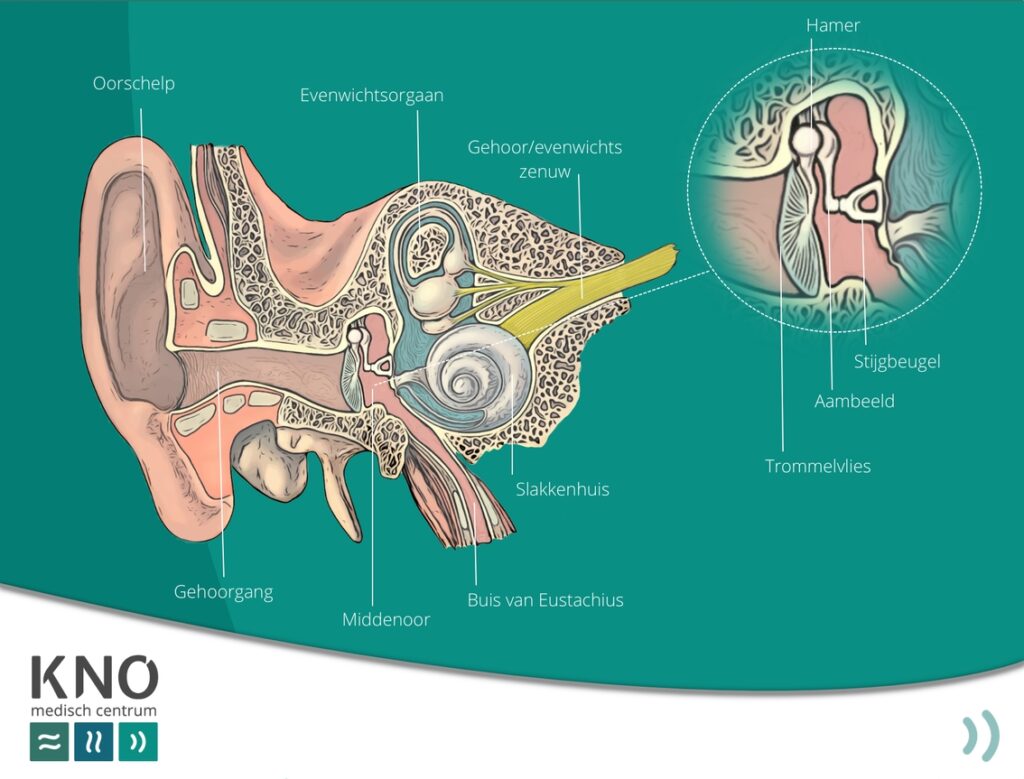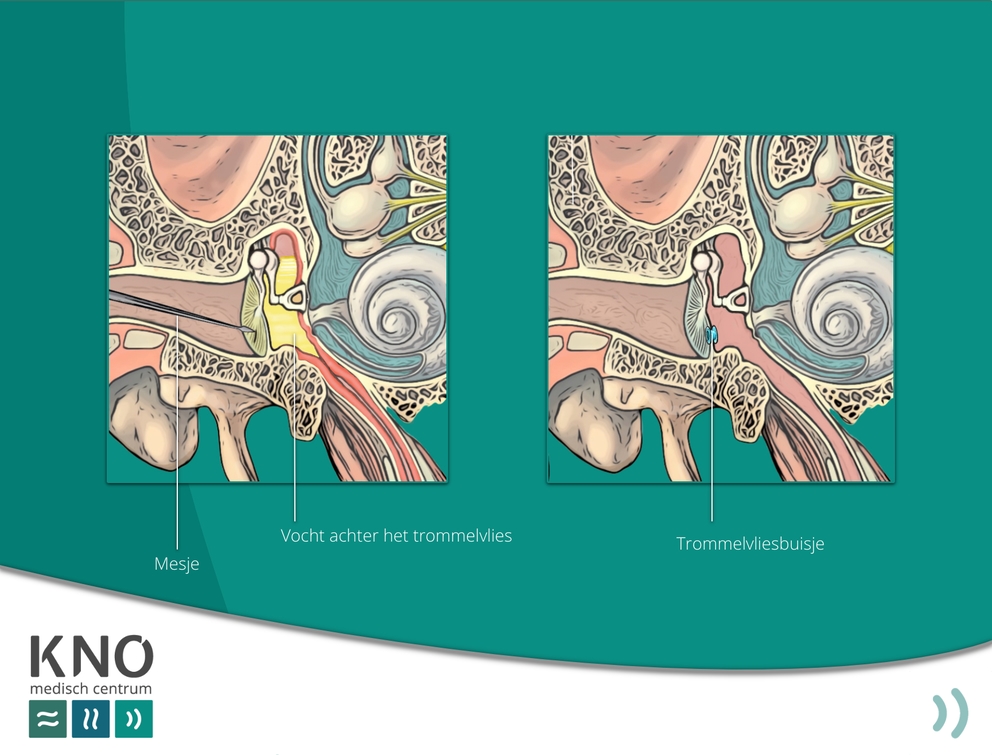what is Eustachian tube dysfunction?
explanation
Eustachian tube dysfunction is caused by a reduced function of the Eustachian tube (the connection between nose and ear). This creates negative pressure in the middle ear. Due to the negative pressure, the eardrum can be pulled inwards, which can reduce the function of the eardrum and the ossicles (hearing bones).

What symptoms are associated with Eustachian tube dysfunction?
symptoms
Most people with REDUCED EUSTACHIUS TUBE function complain of:
- A pressure on the ear.
- Ear pain.
- A stuffy feeling in the ear.
- Hearing oneself louder talking in one or both ears.
- Sometimes hearing may be impaired.
- Crackling sound when swallowing or yawning.
How is tubal dysfunction discovered?
You can contact KNO Medisch Centrum to investigate the cause of your complaints. The ENT doctor can easily determine whether there is a retracted eardrum or whether the eardrum is functioning properly . When in doubt, a pressure measurement of the middle ear or hearing examination can be performed.
What causes Eustachian tube dysfunction?
cause
What to do about REDUCED EUSTACHIUS TUBE function?
solution
equalizing (VALSALVA MANEUVRE)
By equalizing, you can actively force air from the nose through the Eustachian tube. Click here for an instruction to equalize. This can temporarily reduce pressure complaints. To equalize, pinch your nose, keep your mouth closed, and then try to blow your nose. You will feel the eardrums ‘pop’. This treatment can be repeated about 5 times a day.
Which drug helps against Eustachian tube dysfunction?
medicine
Xylometazoline
If you have a cold, you can use nasal drops containing xylometazoline for a short time. Make sure you don’t use it for more than a week.
Anti-inflammatory nasal spray.
By using this spray, the swelling around the inlet of the Eustachian tube decreases and there is more space in the nose. This can increase the aeration of the ear. Unfortunately, these medicines often have insufficient effect.
Drugs against allergies
If you are allergic, anti-allergic drugs can also help against tubal dysfunction.
What possible treatments for tubal dysfunction?
treatments
Ventilation tube
In case of insufficient effect of medication, the ENT doctor may suggest placing an ventilation tube (grommet). A tube is placed in the eardrum and creates an open connection between the middle ear and the external ear canal. The tube actually replaces the Eustachian tube. At children a ventilation tube is placed under anesthesia. In adults, a tube is placed in the outpatient clinic.
Eustachian tube stretching (tubal dilatation)
It is possible to stretch the Eustachian tube by means of a balloon catheter. This is inserted through the nose. This procedure is performed under anesthesia and is widely used in Germany. The effects on symptoms of tubal dysfunction appear to be, but have never been properly demonstrated, which means that the treatment is not reimbursed in the Netherlands.

When to contact us?
contact
If you suffer from deafness in one or both ears, it is wise to consult an ENT specialist to find the cause of the complaints. If your GP has already diagnosed the retracted eardrum, but the complaints do not improve, a consultation with the ENT specialist can also be wise.
If your child has a hearing loss, a delay in speech development, problems at school or behavioral changes, it can still be wise to have this investigated. You can easily make an appointment for this at KNO Medisch Centrum.
More information
click on the links below for more information
Information from the Dutch Association for ENT Surgery
Information about tympanic membranes
Guidelines
This patient information has been compiled with the utmost care. It concerns general information. This information is not legally binding. © KNO Medisch Centrum / knomc.addsoul.nl
